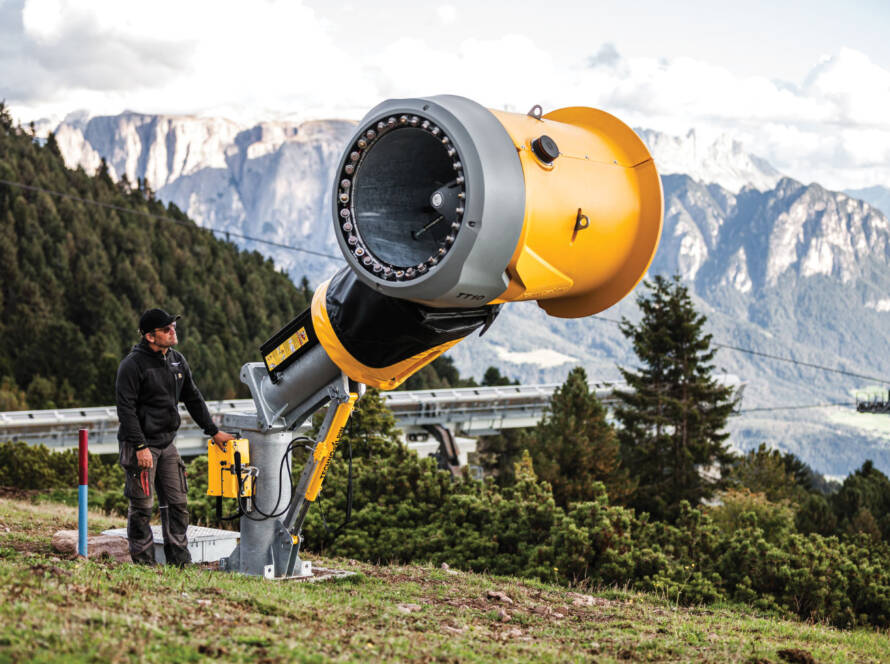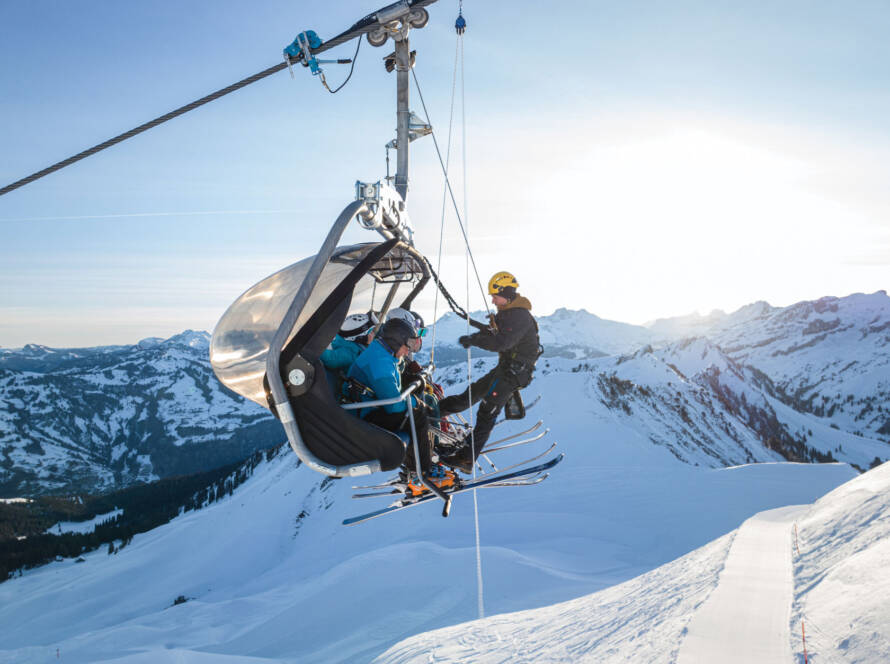For many years, the notion of an emissions-free snow groomer has been something of a holy grail: a great idea rife with possibilities, but not very practical when it comes to the alpine world. That could soon change if one of the world’s leading manufacturers of snow grooming equipment has its way.
PistenBully, which is owned by German-based Kässbohrer, is currently in the midst of testing its 100 E model, the first-ever electric-powered snow groomer. A prototype was unveiled to the public at Interalpin 2019, one of the world’s leading alpine trade fairs that was held May 8-10 in Innsbruck, Austria. That event, coincidentally, marked PistenBully’s 50th anniversary as well.
While the 100 E is at least a couple of years away from being production-ready, it is already generating significant interest among many in the snow grooming industry. And why not? Who wouldn’t be interested in a machine that can prepare tracks with zero percent emissions?
Dennis McGiboney, PistenBully’s vice-president of sales and marketing, says the idea of a fully-electric snow groomer has been in the company’s plans for several years. He says it was the next logical step after the introduction of the PistenBully 600 E+ diesel-electric groomer in 2012.
“I think it’s been a vision of ours for probably at least the last 20 years. We knew that the technology was out there, but it takes time with machines like this,” he said. “But we saw that as the direction for our company, that we want to be on the cutting edge of development.”
PistenBully began testing the 100 E model this past winter and marketing manager John Glockhamer says the feedback the company’s received from its team of European engineers has been “very positive.” It has yet to be tested in North America, but that is likely to occur at some point in the not too distant future when it’s close to being production-ready, he adds.
At first glance, there isn’t much of a discernible difference between the PistenBully 100 E and the company’s regular production 100 model groomer. “If you look at it from the outside, other than the graphics, it looks like a regular production 100 groomer we make,” Glockhamer said.
The real difference, he says, is under the proverbial hood. A battery pack powers the electric motors that drive the tracks and powers the hydraulics for the blade as well as the tiller. The battery pack is capable of supplying 126 kilowatt hours which equates to about 170 horsepower. By comparison, PistenBully’s 100 diesel model generates about 253 hp. The upside with the electric prototype is that it is capable of being just as efficient with less horsepower and can produce slightly more torque.
In testing, the fully electric machine has a top speed of 27 kilometers per hour, which is slightly faster than some of PistenBully’s other snow groomers. Glockhamer adds that the 100 E handles pretty similarly to its regular 100 production-model counterpart.
The current technical challenge on the 100 E is battery life. It can last for between 2.5 and three hours when charged for a period of five to 6.5 hours. PistenBully is currently working with another company that specializes in electric drives and battery packs in hopes of extending the running time of the power source. The challenge, according to McGiboney, is that there aren’t many machines that have to operate in the extreme conditions, like extreme cold and steep inclines, that snow groomers do, and it could take some time to extend the life of the battery pack to the desired 10 or 12 hours.
Still, PistenBully’s management team is excited about the possibilities the 100 E has to offer. In fact, Glockhamer says it could be a perfect option for indoor ski facilities sooner rather than later.
“Where we see the initial potential for this is in indoor ski centers because it’s 100 percent emission-free and that’s a big deal when you are operating inside,” he said. “There, you wouldn’t need as much run time to get your grooming done before you need to recharge. If you have a couple of these, you could knock out your grooming in an indoor center and have no emissions. With most indoor diesel machines, they have special filters and scrubbers to knock down emissions, but you still can’t get it down to zero.”
While the snow grooming industry is the primary target market for the 100 E, McGiboney says it could also be a possible solution for environmentally-sensitive projects, such as tailing ponds and utility work.
“Utility companies will be really big on this because they have to push for zero emissions as well. That could be a market all of its own,” McGiboney said.
He acknowledges that the 100 E is a concept vehicle and will require some additional development before it is ready to be rolled out. However, he says PistenBully is committed to ensuring it’s done its homework before making the machine available. The company also wants to make sure that it’s an affordable option for ski hills and other types of operations before it’s made available.
“You can do all of these wonderful things, but if it comes out to market and it’s twice the price, you’re not going to be very successful and it’s going to be hard to continue development,” Glockhamer said.



